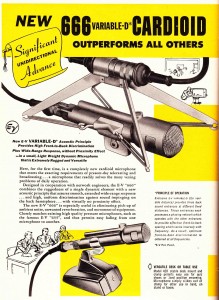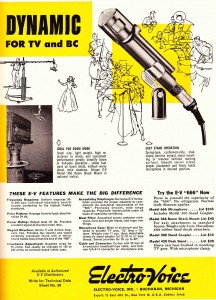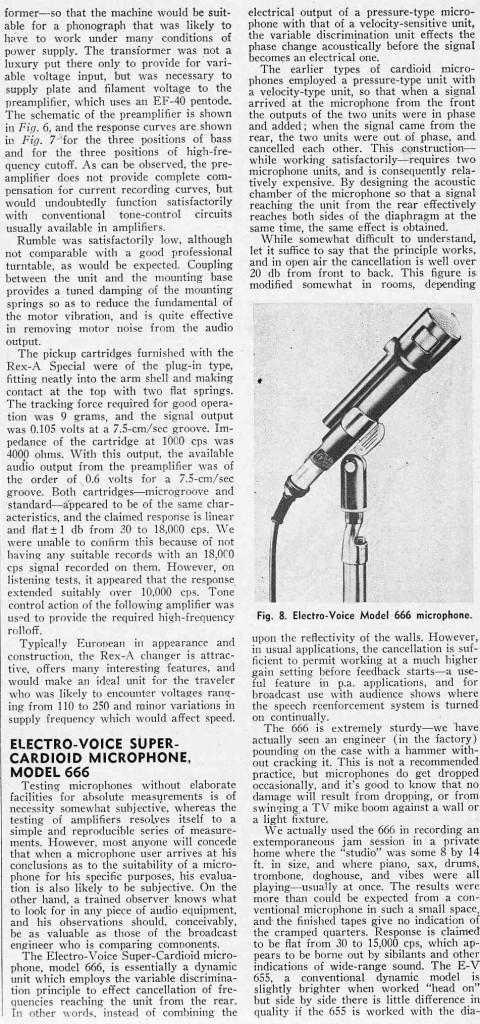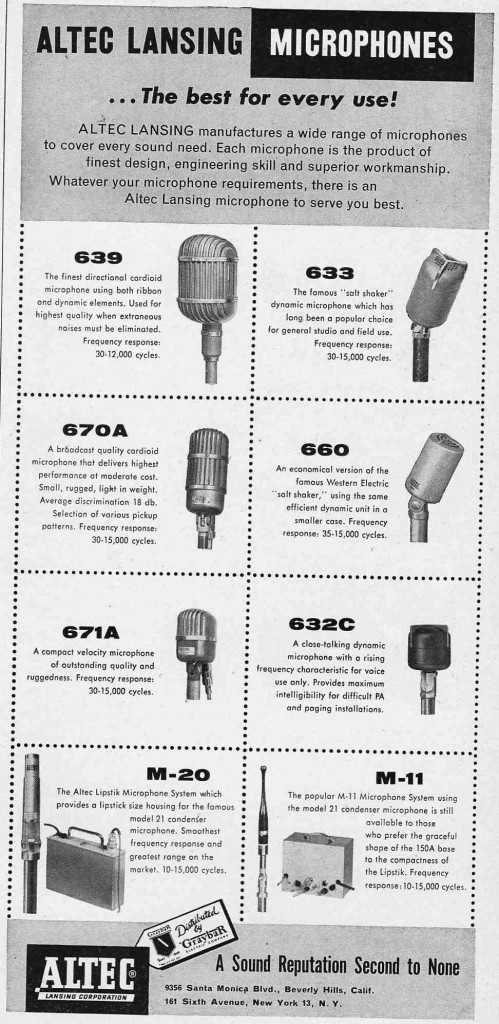 The Altec 639, 633, 670A, 660, 671A, 632C, M-20, and M-11 microphones
The Altec 639, 633, 670A, 660, 671A, 632C, M-20, and M-11 microphones
From the pages of AUDIO magazine in 1954/55: new and new-ish studio microphones at the dawn of the transistor age. Check em out…
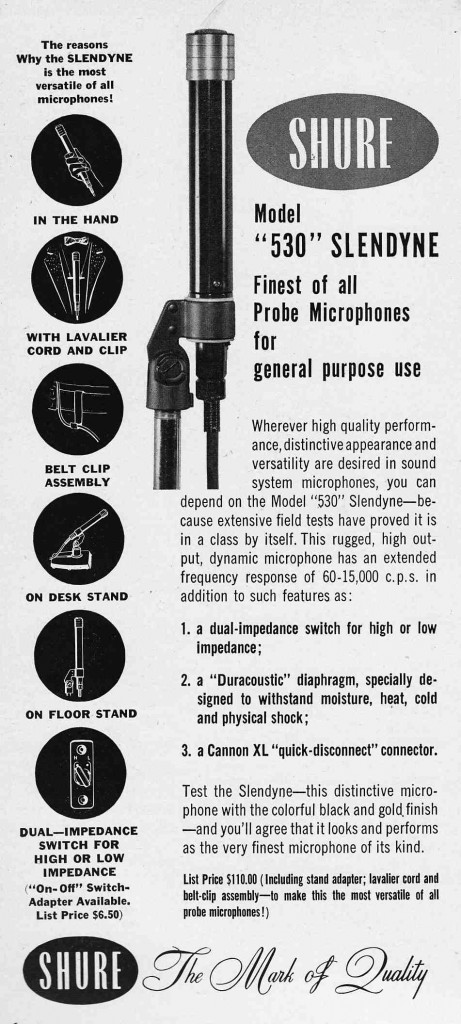 The Shure 530. This was Shure’s mid-range ‘pencil’ mic in the 1950s. At the top end was the 525; lower in the line was the 535. See this link for some audio tests including the 535.
The Shure 530. This was Shure’s mid-range ‘pencil’ mic in the 1950s. At the top end was the 525; lower in the line was the 535. See this link for some audio tests including the 535.
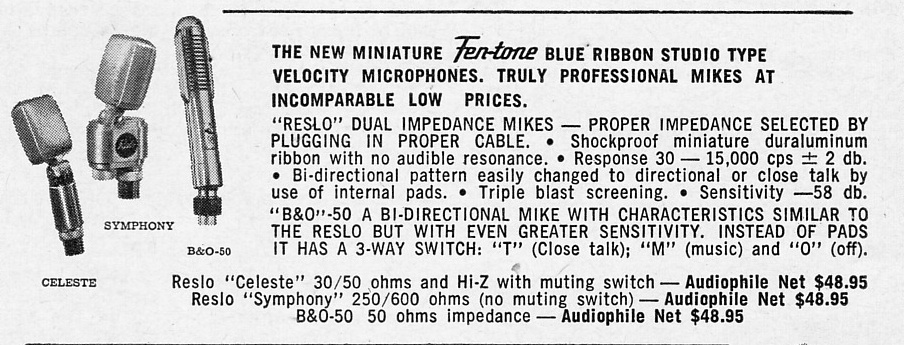 Reslo and Bang & Olufsen ribbon microphones were marketed and distributed in the USA under the ‘Fentone’ banner in the 1950s. Fentone continued as a brand-name for microphone marketing into the 1960s, but later Fentone product was not of this quality.
Reslo and Bang & Olufsen ribbon microphones were marketed and distributed in the USA under the ‘Fentone’ banner in the 1950s. Fentone continued as a brand-name for microphone marketing into the 1960s, but later Fentone product was not of this quality.
Above is the two-page advertising spread that introduced the Electrovoice 666 to the world. The 666 is the grandfather of the much-beloved Electrovoice Re20, which has been a favorite of recording and live-sound engineers for decades. Like the Sennhesier 421, the RE-20 is somewhat proof that dynamic microphone technology hasn’t really advanced much in the past three decades.
********************
Above, a 1955 advert for the 666 along with a review of the 666 from AUDIO magazine.
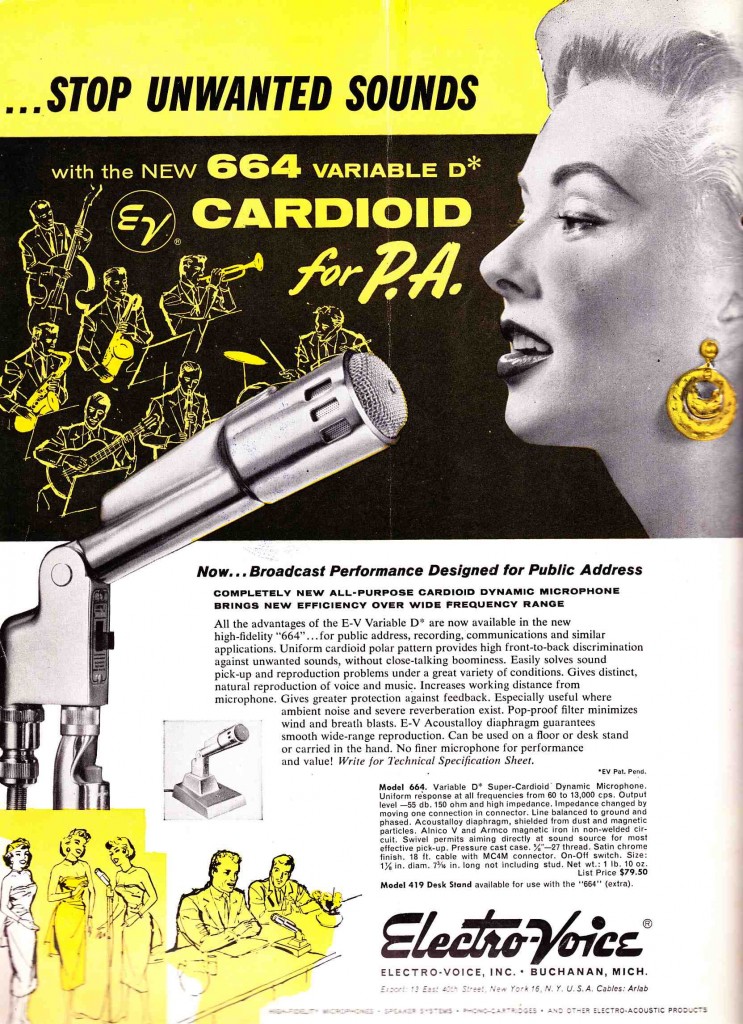 Above is a 1955 ad for the Electrovoice 664. The 664 was the ‘public address’ aka ‘cheaper’ version of the 666; the 664 was immensely popular and thousands remain today. If you come across one of these, there is a good chance it will still work fine. In terms of visual recognition, I would argue the 664 has an iconic appeal exceeded only by the Shure 55 series and the RCA 77 and 44 series. The 664 is not a terrible sounding microphone, although i don’t recommend actually using it in a modern high-decibel PA system.
Above is a 1955 ad for the Electrovoice 664. The 664 was the ‘public address’ aka ‘cheaper’ version of the 666; the 664 was immensely popular and thousands remain today. If you come across one of these, there is a good chance it will still work fine. In terms of visual recognition, I would argue the 664 has an iconic appeal exceeded only by the Shure 55 series and the RCA 77 and 44 series. The 664 is not a terrible sounding microphone, although i don’t recommend actually using it in a modern high-decibel PA system.
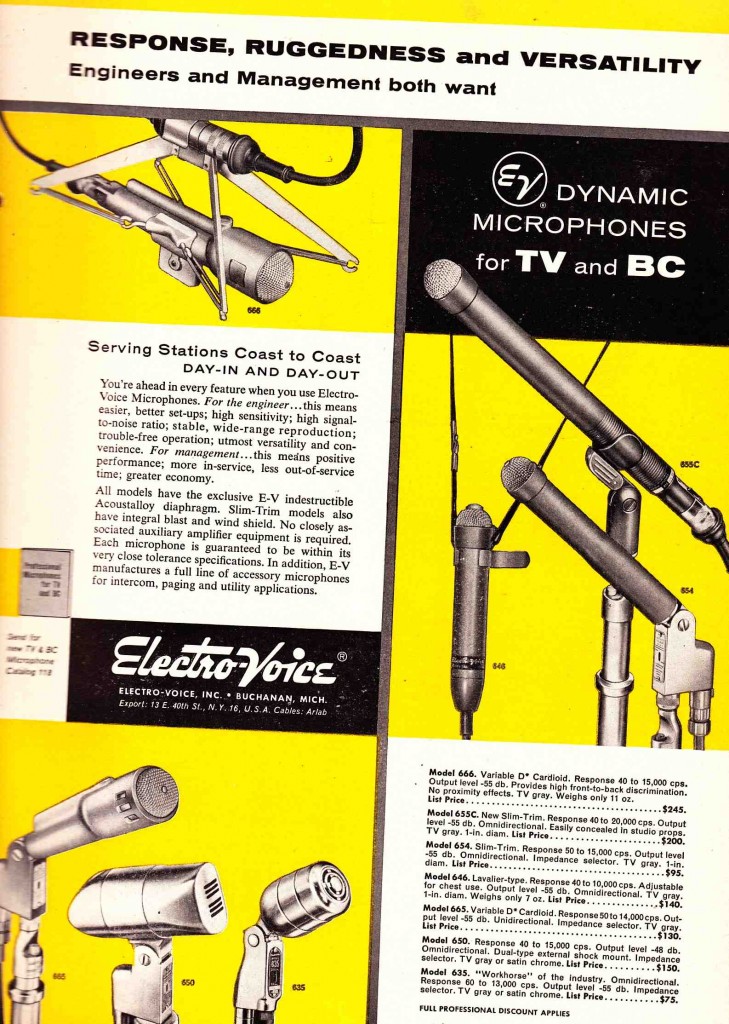 Wrapping up, here’s an ad for all the microphones that Electrovoice considered its ‘professional quality’ in 1955: the 666, lesser-variant 665, 655, its lesser variant 654, 646 lavalier, 650 and 535. Hear my pair of ancient 655s in-action here…
Wrapping up, here’s an ad for all the microphones that Electrovoice considered its ‘professional quality’ in 1955: the 666, lesser-variant 665, 655, its lesser variant 654, 646 lavalier, 650 and 535. Hear my pair of ancient 655s in-action here…
